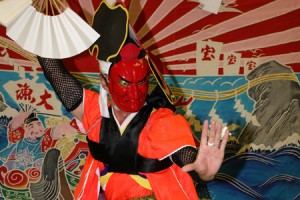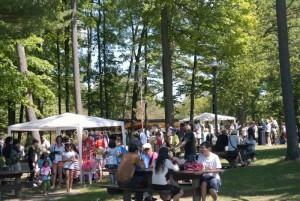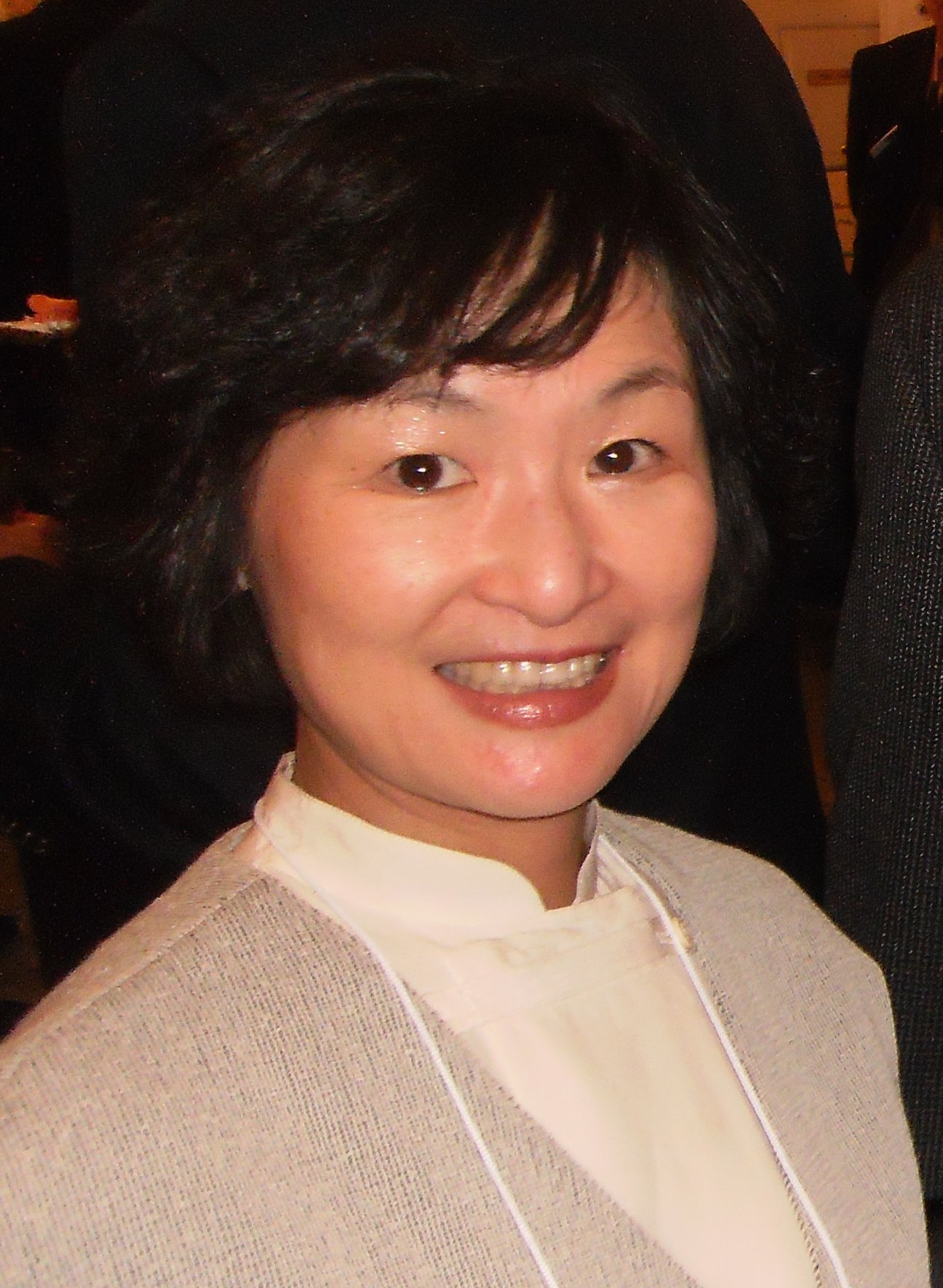Regge Life documentary about Taylor Anderson and Monty Dickson to premiere 11/9 in DC area
Via JETAA DC President Leigh Ann Mastrini (Hyogo-ken, 2006-08):
On November 9th will be the premiere of Regge Life’s documentary film about March 11, Taylor Anderson, and Monty Dickson. Click the link below for more information:
http://www.kickstarter.com/
The film is open to the community, with a suggested donation of $20 when you register. A small group of JETAA DC alumni will be driving down from DC between 2PM – 3PM.
JET Alum Helps Moss Point Mississippi High School Host Japanese Students for Cultural Exchange
Via WLOX.com. Posted by Kay Monroe (Miyazaki-shi, 1995 -97). Click here to join the JETwit Jobs Google Group and receive job listings even sooner by email.
————————————————————————————————————
Moss Point High School’s Japanese club hosted 30 Japanese students in Moss Point Mississippi for a unique experience through the Kizuna Project with JET Alum Megan Bernard.
WLOX.com – The News for South Mississippi
WIT Life #218: Hold These Truths
WIT Life is a periodic series written by professional Writer/Interpreter/Translator Stacy Smith (Kumamoto-ken CIR, 2000-03). She starts her day by watching Fujisankei’s newscast in Japanese, and here she shares some of the interesting tidbits and trends together with her own observations.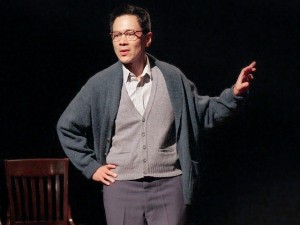
This weekend I went to see the heralded play Hold These Truths being shown at the 14th Street Y. It starts Joel de la Fuente as Gordon Hirabayashi, second generation Japanese-American who defied Executive Order 9066, which led to the forced interment of Japanese Americans in camps during World War II. De la Fuente (10-year veteran of Law and Order SVU) brings his proven acting chops to this one-man show, in which he plays not only the role of Hirabayashi himself, but also those of family, friends, law enforcement, lawyers, etc.
The play traces Hirabayashi’s journey as a boy growing up in Seattle to university student to imprisoned activist to the eventually taking of his case all the way to the Supreme Court. Unfortunately the Court unanimously rules against Hirabayashi and the other two Japanese-American resistors, but he is vindicated when Read More
WIT Life #216: Japanese Food Frenzy
WIT Life is a periodic series written by professional Writer/Interpreter/Translator Stacy Smith (Kumamoto-ken CIR, 2000-03). She starts her day by watching Fujisankei’s newscast in Japanese, and here she shares some of the interesting tidbits and trends together with her own observations.
This past weekend I attended two food events where aspects of Japanese cuisine were being highlighted, the NYC Wine and Food Festival and the Japan Block Fair. At the first, sake was being promoted by the Japan National Tourist Organization (JNTO), and my friend I enjoyed sampling some from the brand Momokawa. Kikkoman also had their own booth, where they were offering panko coated kara-age as well as the three different sauces of sriracha, wasabi and soy. During the Japanese news broadcast I watch every morning, Kikkoman’s kara-age commercials have become Read More
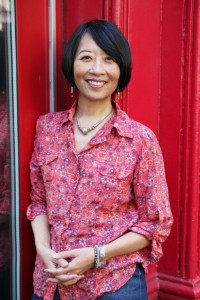
“From the very beginning I saw Gordon Hirabayashi’s story as a unique and quintessentially American story, and although he was Japanese American himself, I hoped that the play would have a broad appeal, not just for that community, or just the Asian American community, but for people of all ages, ethnicities, and walks of life.” (Lia Chang)
By Ann Chow (Hyogo-ken, 2007-09) for JQ magazine. Ann is a native New Yorker who gets scared of the big, scary world, but ventures out into it anyway. She coined the term “stealth gaijin” (or thinks she did because she hadn’t heard of it before writing a bunch of articles under that moniker during her time on JET). When not portraying 14-year-olds on Gossip Girl, she can sometimes be found playing a (much older) law clerk on Law and Order: SVU.
Jeanne Sakata is an award-winning stage actress who has performed with many well-known companies on the country’s biggest stages, including the Lincoln Center Theater and the John F. Kennedy Center. She made her playwriting debut in 2007 with Hold These Truths (formerly Dawn’s Light: The Journey of Gordon Hirabayashi), the story of the Japanese American activist and Presidential Medal of Freedom winner, who passed away earlier this year at age 93.
Hold These Truths first premiered in 2007, and has been performed multiple times around the country since then. It is now a part of the Library of Congress Playwrights Archive in the Asian American Pacific Islander Collection in Washington, D.C., and is now having its Epic Theatre Ensemble New York premiere run (starring Joel de la Fuente and directed by Lisa Rothe) through Nov. 18 at the Theater at the 14th Street Y in repertory with Dispatches from (A)mended America.
JQ recently spoke with Sakata about her profound fascination with Hirabayashi’s life, the meticulous research that went into writing Hold These Truths, and what she hopes the play will accomplish.
What are the goals you are trying to achieve with Hold These Truths?
I hope, first, that Hold These Truths will spread awareness of Gordon Hirabayashi, whose story is still virtually unknown to so many Americans. As a young college student during World War II, Gordon stood up for the principles of the Constitution when the United States government failed miserably to do so, persecuting and imprisoning him for his actions. Earlier this year, Gordon passed away in January at the age of 93, and, amazingly, a few months later in April, President Obama posthumously awarded him the Presidential Medal of Freedom, the nation’s highest civilian honor, for the courageous stand he took so many decades ago. So I feel, this year especially, that Gordon’s story is a vitally important one to anyone who cares about our country, and the principles of the Constitution. Second, I hope the play will spread awareness on the East Coast of the mass incarceration of all people of Japanese ancestry during World War II on the West Coast, as knowledge of this tragedy seems to be much less prevalent here than out west.
In general, people on the West Coast know more about this time in American history. What reactions do you expect now that it’s playing here in New York?
As I said earlier, one common reaction we’ve had is that of shock that something so horrible happened during the World War II years in America. Many of our East Coast audience members who lived through those years have said that they were aware that “something bad” happened to the Japanese on the West Coast during that time, but they did not know just how bad it was. For example, they did not know that anyone in Seattle who was one-sixteenth Japanese, or babies from orphanages who had any Japanese blood, were ordered to be penned up behind barbed wire. They don’t know that so many children and young American citizens were torn out of their schools and imprisoned, and for so many years. But I also hope the reaction to Gordon’s story we’ve had here so far will continue—that people will be delighted, as well as profoundly moved and inspired, to learn about him.
How did you choose the subject matter for the play? Did you have family that lived in the internment camps?
I myself am a third-generation Japanese American, and in the 1990s I happened to see a documentary video about Gordon titled A Personal Matter: Gordon Hirabayashi vs. the United States. I was shocked that I had never heard his story before, and I started to find out everything I could about him. The more I read, the more fascinated and intrigued I became. The story just grasped me and wouldn’t let me go, becoming an obsession, and I knew I couldn’t rest until I tried to write a play about Gordon.
My mother’s side of the family was living in Colorado during World War II, and so did not have to go to the camps, although they experienced plenty of hostility and racism in the town where they lived. My father’s family, however, all lived in Watsonville on California’s West Coast, so all of them were rounded up and imprisoned in the camp in Poston, Arizona. As I was growing up, my father and aunts and uncles never spoke of the experience, I believe, because it was so traumatic for them, as it was for so many others.
Justin’s Japan: Nippon in New York: Days of Comic Con, Nights of Provocation
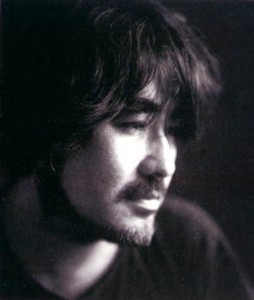
Legendary artist Yoshitaka Amano (“Final Fantasy,” “Vampire Hunter D”) will appear at New York Comic Con Oct. 12-13.
By JQ magazine editor Justin Tedaldi (CIR Kobe-shi, 2001-02) for Examiner.com. Visit his Japanese culture page here for related stories.
October is shaping up to be a memorable month for Japanese culture in New York. Whether it’s examples of its rich past (traditional Shinto dance), something contemporary (legendary manga and anime artists), or works of art captured by others (photographer Eikoh Hosoe, a play based on the life of a Japanese American Medal of Freedom winner), autumn here is so inviting.
Wednesday, Oct. 10, 6:30 p.m.
333 East 37th Street
Master photographer Eikoh Hosoe is known for his dark, metaphorical and provocative images. First emerging in postwar Japan as a member of the avant-garde movement, he produced Barakei (Ordeal by Roses), featuring author and right-wing activist Yukio Mishima in a series of dark, erotic poses. He later published Kamaitachi, showing butoh dance founder Tatsumi Hijikata in a series of supernatural images across the Japanese countryside. Mr. Hosoe speaks about his collective work and reflects on his long and dynamic career. Moderated by Dr. Miwako Tezuka, director of Japan Society Gallery. Followed by a reception.
Oct. 11-14
655 West 34th Street
First held in 2006 and paired with New York Anime Festival starting in 2010, New York Comic Con is the city’s biggest annual fan convention dedicated to comics, graphic novels, anime, manga, video games, toys, movies and television. Attendance has more than tripled since its launch, as last year’s estimates topped 105,000 visitors. This year’s distinguished “anime guests” include Final Fantasy/Vampire Hunter D artist extraordinaire Yoshitaka Amano (Oct. 12-13), Sakuran creator Moyoco Anno (Oct. 13-14), Tufts University Professor of Japanese Studies Susan Napier (Oct. 13), and perennial NYCC staple voice actress Veronica Taylor (Pokémon, Teenage Mutant Ninja Turtles).
For the complete story, click here.
2012 Kitadaito Festival Day Two
The 2012 Kitadaito Festival was a two-day event in September marking an important time of community inclusion and tradition. The second day of the Festival was on the 23rd and, as in years past, featured sumo competitions as a traditional Japanese offering to the kami and ancestors of the village. If you haven’t already, be sure to check out my post on day one. Below is a video showing excerpts from the day, with more information and photos farther down. Enjoy!
Sumo Competitions
The second day began in the morning on Sunday around 9:00. Villagers gathered again before the Daito-gu shrine. There, a Shinto priest led a ceremony blessing both the sumo ground and the people. New babies were also brought before the shrine by their parents so that the adults could ask for safe and prosperous lives for their children.
After the ceremonies were complete, the villagers settled in to watch Edo and Okinawan Sumo competitions. Although Kitadaito is in Okinawan Prefecture, it was originally settled by people from Hachijo Island, which means the traditions of the island are a unique mix of mainland Japan and Okinawa. At the Daitogusai festival, both types of sumo take place. Pre-school through junior high students take part in edo style sumo.
… Read the rest and see more photos on MoreThingsJapanese.com!.
2012 Kitadaito Festival Day 1
Posted by Benjamin Martin, a 5th year JET in Okinawa, publisher of the blog MoreThingsJapanese.com and author of the fantasy novel Samurai Awakening (Tuttle).
Every year on September 22 and 23 Kitadaito Village celebrates its largest Festival. These dates mark the beginning of autumn. Kitadaito, also known as north Borodino island, is a place of 12sq kilometers 320 kilometers east of the Okinawan mainland. It is unique in that it was settled by residents of Hachijo Island (near Tokyo) but is part of Okinawa Prefecture. Over the past 100 years the island has become a unique chanpuru (mix) of both cultures.
After graduating from the University of Arizona, I spent three years living and teaching on Kitadaito, and returned this year after more than a year on Kumejima. It was great to re-experience old memories and make new ones as the festival has changed since my time there. Watch the accompanying video for a chance to experience a few bits from this truly unique day.
Read more about the Kitadaito Festival on Ben’s blog — MoreThingsJapanese.com
JETAA: Rocky Mountain JETs Come Out For The Kids
Via the Japan Local Government Center blog:
The Rocky Mountain JETAA chapter has been busy with two recent events helping out their various Colorado sister cities.

Fujiyoshida, in Yamanashi-ken, and Colorado Springs just celebrated their 50th anniversary in early August, so RMJETAA mobilized their Colorado Springs and Denver JET alumni to participate in the festivities in Colorado Springs and be available to assist with translating, interpreting, and other duties for the 70 visitors from Japan. One main place they helped out was the family event held at America the Beautiful Park on August 4th. Because many JET alumni from Colorado Springs were placed in Fujiyoshida as ALTs and CIRs, the celebration was a great chance for friends and acquaintances on both sides to get together again and reminisce about old times spent together in Japan. As part of the celebration, Mayor Horiuchi of Fujiyoshida and the students presented a check to Colorado Springs for $11,415, raised by the citizens of Fujiyoshida to help their sister city recover from the recent devastating wildfires there. Although Fujiyoshida now directly contracts with Colorado Springs for private CIRs it was wonderful that they could still draw on the resources of their former ties to the JET Program.
Click JLGC link for the full blog post in English.
クリックJLGC リンク 日本語 ブログ.
Japan Society (NY) Event: Local Economic Recovery: Firsthand Accounts from Tohoku
Thanks to Jim Gannon (Ehime-ken, 1992-94), Executive Director of the Japan Center for International Exchange (JCIE/USA), for sharing this Japan Society event with which JCIE is involved.
Local Economic Recovery: Firsthand Accounts from Tohoku
LECTURE: Local Economic Recovery: Firsthand Accounts from Tohoku
Monday, September 17, 6:30 PM
SYNOPSIS
The world’s eyes were on Kamaishi City in Iwate Prefecture a year and a half ago when a large portion of the city was devastated by the March 2011 tsunami. A number of small and mid-sized businesses—the lifeblood of the region—have taken innovative, entrepreneurial approaches that have yielded initial successes in revitalizing the local economy. Local leaders, Akiko Iwasaki, Owner, Horaikan ryokan, Akio Ono, President, Ono Foods Co., Ltd, and Takahiro Sasa, Deputy Manager, Industry Promotion Department, Kamaishi, as well as Takeo Kikkawa, an energy expert and Professor, Graduate School of Commerce and Management, Hitotsubashi University, will give firsthand accounts of how they have restarted their businesses against formidable odds and the challenges that continued to confront their community and others like it throughout the disaster zone.Followed by a reception.
TICKETS
$12/$8 Japan Society members, seniors & students
Buy Tickets Online or call the Japan Society Box Office at (212) 715-1258, Mon. – Fri. 11 am – 6 pm, Weekends 11 am – 5 pm.
Kagura Tours the East Coast; Some Memories of Kagura in Japan
Posted by JETAA Northern California’s Mark Frey (Kumamoto, 2002-06):
For those of you on the East Coast of the U.S., there will be rare Kagura dance performances at the end of October and beginning of November. If you are in the vicinity, I highly recommend you go to see it:
http://www.japansociety.org/event/kuromori-kagura-folk-music-dance-from-tohoku. As you may know, Kagura is an extremely old shinto ritual dance that relates the stories of ancient Japanese mythology. The stories are told through a series of dances with colorful masks and costumes. The dance cycles are long and performed in full can last 20+ hours. The cycle often culminates in the Japanese Ur-story of how by means of a wild and raucous dance the gods lured the Sun Goddess Amaterasu out of her cave in order to return sunlight to the universe.The overall atmosphere of Kagura on and off stage is one of alternating solemnity, spectacle, and shared mirth, overall an entertaining and life-affirming ritual experience. The music, which is very percussive and uses repetitive pattens, quickly becomes hypnotic, at times lulling you into a kind of trance.
JETAA Ottawa’s 8th Annual Summer Festival/Natsu Matsuri
*******Via jetaaottawa.ca By Lisa Mallin (Former CIR in Chiba-ken) for the JETAA Ottawa Newsletter
Blessed with perfect weather, JETAA Ottawa’s 8th Annual Japanese Summer Festival attracted hundreds of participants from across the National Capital Region on Saturday, August 18, 2012, at Vincent Massey Park. The day was packed full of Japanese cultural demonstrations, intercultural experiences, and 500+ JETAA dogs!
Mr. Yasir Naqvi, MPP for Ottawa Centre, offered words of support for Japan’s swift recovery from the March 2011 disasters while Japanese Ambassador Kaoru Ishikawa officially kicked off the day’s events by thanking Canadians for their compassion and continued engagement.
Oto wa Taiko attracted people from all corners of the park to listen to their powerful drumming and watch their well-choreographed moves. Tateyama Dojo introduced ancient martial arts of Japan through their lively kendo, iaido and jodo demonstrations. Ottawa newcomer Ryoko Itabashi brought traditional tones to the crowd with each note by playing her shamisen (a three-stringed, Japanese musical instrument). Jordan Lincez, a JET Programme alumnus, won over the crowd with his musical collaboration featuring special guest Hitomi Iwase. For the first time, Ottawa was treated to a taste of Montreal-Japanese fusion with Japanese Folk Dance Group Komachi Montreal’s beautiful performances.
Throughout the day, community partners and volunteers provided great activities such as children’s face painting, calligraphy, and bonsai to introduce different aspects of Japanese culture and tradition. To top it off, JETAA Ottawa gave out more than 500 hot dogs over the course of the festival. (For the curious: Link to JETAA dog toppings recipes).
JETAA Ottawa’s Japanese Summer Festival is the largest Japanese festival in the National Capital Region. We have grown from a small alumni event to an inclusive Japanese arts and culture celebration. We are grateful to all of the participants, volunteers, performers, community partners, local Japanese communities and the Council of Local Authorities and International Relations for making the day’s events possible.
Justin’s Japan: Nippon in New York — B’z, Books, Sake Tastings and Michael Jackson in Yokohama

B’z, the biggest-selling musicians in Japanese history, will make their New York debut at Best Buy Theater Sept. 30. (Courtesy of Best Buy Theater)
By JQ magazine editor Justin Tedaldi (CIR Kobe-shi, 2001-02) for Examiner.com. Visit his Japanese culture page here for related stories.
After you’ve rested up from Labor Day weekend, enjoy the sights, sounds and tastes of Japan with a whole month’s worth of events, activities and products from musicians to authors to restaurants. It’s all happening here as we welcome another autumn in New York.
Tuesday, Sept. 4, 6:00 p.m.-8:00 p.m.
Oze no Yukidoke from Ryujin Shuzo Sake tasting
Sakaya
324 East 9th Street
Hailing from Gunma prefecture, Oze-no-Yukidoke is a well-refined sake that is widely considered to be one of the finest sakes available. Join Mr. Hideki Horikoshi, the head sake brewer of Ryujin Shuzo, for his his handmade signature sake, Oze no Yukidoke Junmai Daiginjo, as well as Ohkarakuchi Junmai. Purchasers will receive a lacquered sake cup as a free gift!
Sunday, Sept. 9, 1:00 p.m.
Cultural Resource – Contemporay Music by Japanese Composers/Musicians
Scandinavia House
58 Park Avenue
“The influences of ethnicity on the musical idioms of contemporary composers” is the research subject of Akiko Asai, Visiting Scholar at New York University. This concert is held as a part of her research project and a wrap-up of her research term at NYU and features Japanese composers and their works. The audience will be able to not only meet these artists’ creativities but also listen to the result of their research through the identical sound of accordion. Tomomi Ota, who will play their pieces, is a one of the promising performers who can show the audience different perspectives vividly.
For the complete story, click here.
WIT Life #212: US Open 2012
WIT Life is a periodic series written by professional Writer/Interpreter/Translator Stacy Smith (Kumamoto-ken CIR, 2000-03). She starts her day by watching Fujisankei’s newscast in Japanese, and here she shares some of the interesting tidbits and trends together with her own observations.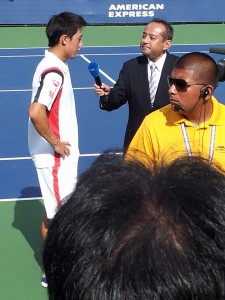
Yesterday I went to the first day of this year’s U.S. Open tennis tournament in Flushing Meadows, and managed to catch some matches despite a long rain delay. I was happy to see that two of the outer courts were featuring Japanese players, Kei Nishikori (nicknamed “Air K” because of the jump he takes to give his forehand a little extra power) and Hiroki Moriya. I had never heard of the latter but am a big fan of the former, having first seen him in an exciting five-setter at the Open several years ago.
When my friend and I arrived, Nishikori was up two sets and leading in the third against Argentinian Guido Andreozzi when the downpour began. We camped out at the side court to insure good seats when the match resumed, which it did a few hours later. Andreozzi showed some strength but Read More
JET alum helps Japan ICU Foundation to hold Tohoku fundraiser event at Japanese Embassy in DC
************
JET Alum Mark Flanigan (Nagasaki-ken, 2000-04) volunteered for earthquake relief efforts in Ishinomaki following 3/11, as a way to give back to the country he has lived in twice now. As a Rotary Peace Fellow at the International Christian University (ICU) in Tokyo, Mark jumped at the opportunity to volunteer in Tohoku after the devastating earthquake struck Japan. He joined a group of international student volunteers, including graduate and undergraduate students of many nationalities, in helping to clean up a small fishing village in Oshika-hanto. Now a graduate of ICU, Mark continues his efforts for ongoing Tohoku relief as a Program Director with the Japan ICU Foundation in New York City.
On Friday, September 14, the Japan ICU Foundation (JICUF) will hold a special Fundraising Dinner and Silent Auction in Washington, DC. The event will begin at 6:00 pm at the Old Ambassador’s Residence, adjacent to the Embassy of Japan on Massachusetts Avenue. Special guests will include the new (and first-ever female) ICU President Junko Hibiya, Dean of International Affairs Shaun Malarney and Mr. Kakutaro Kitashiro, the Chair of ICU’s board of trustees.
This Fundraising Dinner and Silent Auction will continue JICUF’s ongoing support for a variety of recovery efforts in the wake of the tragic March 11th, 2011 earthquake and tsunami, with the proceeds from the evening to go towards supporting ICU’s continuing earthquake relief projects in Tohoku. It follows on JICUF’s March Sake Tasting Fundraiser at the Penn Club in New York City, which raised nearly $10,000 to support these efforts. Since the devastating March 11, 2011 earthquake, tsunami and subsequent nuclear accident, JICUF has worked with ICU in Tokyo on key aspects of the ongoing response.
If you would like to attend the fundraiser event on September 14, you can go here for more information: http://jicuf.org/newsevents/fundraising-dinner-in-washington-dc-on-friday-september-14/
Members of the JET Alumni community are welcome and encouraged to join! Special discounts are available for Students, Young Professionals and the Media.
To RSVP for this event, please contact the JICUF at information@jicuf.org.




